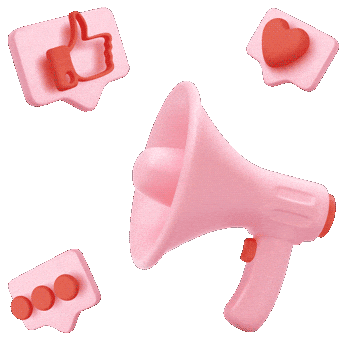Types and kinds of content: exploring different formats

We’ve got for you a list of formats that you can integrate into your content plan. Most of them can suit both a fully-blown blog (e.g., a Wordpress-powered blog) and for social media communities or personal pages.
Every resource requires a diversity of posts, and publications should differ both in content and in formats. Not only is this needed to retain user interest, but it also helps the author stay engaged. Even if you are a big writing enthusiast, you may find it tedious and daunting to create all the same things every day. Trying something new is always a remedy. Here are some ideas to infuse into your content strategy.
- How-to, guides, and tutorials. Texts answering the “how” question are very likely to climb to the top of search results. Tell, in simple words, how one can do something on their own; add your photos, videos, screenshots, or diagrams. Such materials should be the core of your blog if you are planning to promote your resource in search engines.
- News, event reviews, coverages. What makes news posts very beneficial is that exclusive and up-to-date information always sparks user interest and upscales the share of subscriptions and returning readers. There are lots of online journals covering global news and show business news, so you may want to pick a specific niche. If you write about lifestyle, add some event announcements. If you keep a beauty blog, publish a collection of noteworthy new items at least once a month.
- Reviews of other online outlets and article collections. Make friends with other blogs and channels: choose the best materials and publish links to them in your space. You may want to pick out the hottest materials: if you do so, users will visit your page even when they want to read something from their favorite journals. However, do not copy-paste other authors’ texts: just leave the title and brief description.
- Readers’ stories and cases. This is one of the most popular formats: for starters, people love POV stories and storytelling; secondly, it’s way easier and engaging to learn from real cases rather than formal theory. You can carry out a case competition and pay authors for the stories they publish, or just ask your friends to share their experience.
- Statistics, studies, white papers. Everyone—both individual readers and major companies—likes quality statistics. You can either conduct your own studies or aggregate the data you find online. For instance, if you work in the finance program vertical, you can compile a material about the average number of bank cards per person in different countries. Such insights are publicly available on the websites of central banks.
- Infographics, diagrams. Try visualizing the information you find, in the form of an infographic: it’s much easier to perceive numbers and facts in diagrams. The same works for guides and tutorials: a flowchart can perfectly explain what to do or how something works.

- Humor. Even the most serious political news portals sometimes post caricatures. Comics and memes are a simple, intuitive, and actual format. And their greatest feature lies in their virality: users want to share content that makes them laugh—and this will boost your popularity. But don’t go too far: our experience suggests that one can barely capitalize on a humor-only resource using a CPA model.
- Reviews of books, movies, TV shows. If you read many books related to the subject of your portal, share some personal reviews to help your readers learn more and involve them in a discussion (books often ignite heated discussions in comments).
- Reviews, tests, and collections of tools and services. No matter what you write about, there is always a great kit of tools. Keeping a handicraft blog? Tell about knitting needle brands. Writing about traveling? Publish a selection of insurance or flight ticket services. Sharing insights about cosmetics? Test some eyeshadow brushes.
- FAQ (questions and answers). Gather the most popular questions from your readers and assemble them in standalone articles. Doing this, you will be sure your content is popular and relevant to readers’ queries and needs.
- A day in life. Why not launch into gonzo journalism? Tell about your day or try being another person. Invite people to share their moments. Your blog is devoted to tourism? Ask a flight attendant, guide, or souvenir store owner to tell about their usual day. You can interview a user in person or online.

- Interview. Interview celebrities, experts, or witnesses of major events. Compile a question list out of the comments, messages from users, and your own interest. It’s okay if you sound naive: an expert can explain a tricky thing to you.
- Lists and checklists. The most structured and succinct format. People create lists to not forget something: things to take to a trip, text quality checklist, pre-launch website parameters, etc. The scope of subjects is nearly unlimited. You can turn this format into a challenge—creating tasks for your followers. An express case of such a challenge is Inktober. In October, artists are given a list of topics they need to devote their works to every day during a month.

- Online games. You don’t have to be a coder to create a game. A simple decision-making game can be assembled from a few web pages. For example, you can create a game on Tilda and embed it into a page via iframe. There are some cases of complex quests that don’t always need labor-intensive development.
- Polls & surveys. Survey findings can provide you valuable user feedback and a ground for some noteworthy content. The more answers you get, the more precise the findings. Don’t go too deep in analyzing a complex subject. You can go with a “pick one of two answers” format—showing the results in real time.
- Tests. A simple and entertaining format. While polls and surveys are tools that serve you, tests are tools that serve users themselves. Don’t forget to deploy the “Share” button to pump up your reach. Tests can be serious (e.g., self-check tests) or fun (e.g., “What Disney princess are you?”).

- Podcasts. Pros: easy to listen while driving, walking, or when your hands are busy. Cons: podcasts will not index as well as text materials. You can voiceover one of your text materials or talk about another subject—either on your own or in a dialog with someone else.
- Event coverages. If you visit special events, tell your followers about the noteworthy things you find there. Write in the first person, keeping it informal. Tell about your personal experience, host online sessions, tag the location—all this will help you make your content more diverse and meet new people.
- Historic references, biographies. If you dive a little deeper, you can dig out interesting historical facts, tell about key figures, and big events that influenced the industry. Tell your subscribers about inventors and contemporary entrepreneurs, history and origins of everyday things. This will be engaging, helpful, and inspiring.
- Citations. Often used in business and personal development blogs, such references decorate the resource and motivate the users. Their cornerstone benefit is virality (given that users want to share such content).
Lend variety to your content, don’t fear to experiment with new formats—they may become your flagship topic. Don’t copy other authors’ materials but gain inspiration from them. Remember that only original, authentic texts can turn your portal popular.






